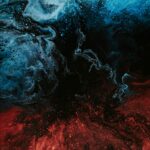Hi, there! I’m Jen Glantz, a color analysis expert. Let’s dive into Color Analysis.
A recent study revealed that 85% of consumers cite color as the primary reason for purchasing a particular product. This statistic underscores the profound impact color has on our daily lives and decisions. Color analysis integrates physics, psychology, and technology to understand and categorize color properties. Its applications are vast, ranging from art conservation to environmental monitoring and personalized fashion recommendations.
Modern color analysis employs spectrophotometry, digital imaging, and AI algorithms for precise measurements. These advancements have revolutionized how we perceive, analyze, and utilize color across various industries.
Let’s dive in.
Quick Resources:
- Use our AI Color Analysis Tool
- What is Color Analysis?
- Color Analysis Quiz
- Color Analysis Deep Dive
- Personal Style Color Analysis
Foundations of Color Theory in Analysis
Color theory in analysis combines principles from physics, psychology, and visual arts. It’s a complex field that requires a deep understanding of how colors interact and influence human perception.
Key concepts in color analysis include color wheels, color harmony, and color contrast. These foundational elements form the basis for more advanced analytical techniques. I’ve found that mastering these basics is crucial for anyone looking to delve deeper into color analysis.
The Psychology of Color Perception
Color perception involves complex interactions between light, the eye’s photoreceptors, and neural processing. It’s fascinating how our brains interpret these signals and create the vibrant world we see around us.
Cultural and personal experiences significantly influence individual color interpretations. What might be a joyful color in one culture could symbolize mourning in another. This cultural aspect of color perception adds layers of complexity to color analysis, especially in our increasingly globalized world.
Color psychology studies have shown consistent emotional and behavioral responses to specific colors across cultures. For instance, blue often evokes feelings of calm and trust, while red can stimulate excitement or urgency. These insights are invaluable in fields like marketing and design.
Research has shown that up to 90% of snap judgments made about products can be based on color alone. This statistic highlights the critical role of color in consumer behavior and brand perception.
Get your own color analysis here >>
Cultural Influences on Color Interpretation
Cultural color associations can vary widely, affecting marketing strategies and product design. I’ve seen multinational companies stumble when they fail to consider these cultural nuances in their global campaigns.
Some colors have opposing meanings in different cultures. White, for example, symbolizes purity in Western cultures but is associated with mourning in many Eastern cultures. This dichotomy presents both challenges and opportunities in cross-cultural color analysis.
Understanding cultural color interpretations is crucial for effective cross-cultural communication and design. It’s not just about avoiding faux pas; it’s about creating meaningful connections through thoughtful color choices.
Synesthesia and Its Impact on Color Analysis
Synesthesia affects approximately 4% of the population, with color-related synesthesia being one of the most common forms. This fascinating condition offers unique insights into color perception and processing.
Synesthetes may associate colors with letters, numbers, or even days of the week. I once worked with a synesthete artist who saw each musical note as a distinct color. Her paintings were like visual symphonies, offering a new way to experience music.
Studying synesthetic color perceptions can provide valuable insights into the neural mechanisms of color processing. This research has implications not just for color theory, but for our understanding of brain function and sensory integration.
The Munsell Color System: A Historical Perspective
The Munsell system organizes colors based on three attributes: hue, value, and chroma. It’s a foundational system that has shaped modern color analysis methods.
This system provides a standardized method for describing colors, crucial for consistency in various industries. From textile manufacturing to digital design, the Munsell system offers a common language for color communication.
The system’s three-dimensional model allows for precise color matching and communication. It’s like a map of the color world, helping us navigate the vast spectrum of possible hues and shades.
Adapting Munsell’s Principles for Digital Color Analysis
Digital color models like RGB and CMYK are based on principles similar to Munsell’s system. These models have become the backbone of digital color representation and analysis.
Software tools use algorithms to convert between Munsell notations and digital color values. This translation allows for seamless integration of traditional color theory with modern digital applications.
Digital adaptations of Munsell’s system enable precise color matching in print and digital media. It’s remarkable how a system developed in the early 20th century continues to influence cutting-edge color technologies.
Get your own color analysis here >>
The Role of Illuminants in Munsell-based Analysis
Standard illuminants (e.g., D65 for daylight) are used to ensure consistency in color analysis. These standardized light sources help create a controlled environment for accurate color assessment.
Metamerism, where colors appear different under different light sources, is a key consideration in Munsell-based analysis. I’ve seen this phenomenon cause significant issues in industries like automotive paint matching and textile production.
Spectrophotometers can measure color appearance under various illuminants, aiding in accurate color matching. These sophisticated instruments have revolutionized color analysis, allowing for precise measurements across different lighting conditions.
Advanced Technological Approaches to Color Analysis
Modern color analysis employs a range of high-tech tools, including spectrophotometers and digital imaging systems. These advanced technologies have opened up new possibilities in color measurement and analysis.
AI and machine learning algorithms are enhancing the accuracy and efficiency of color analysis processes. From automated quality control in manufacturing to personalized color recommendations in fashion, AI is transforming how we interact with and understand color.
Hyperspectral Imaging in Color Analysis
Hyperspectral imaging captures and processes information from across the electromagnetic spectrum. This technology allows us to see beyond what the human eye can perceive, revealing hidden details in colors and materials.
This technology can detect subtle color variations invisible to the human eye. In fields like agriculture and environmental monitoring, hyperspectral imaging can identify plant health issues or water pollution before they’re visible to the naked eye.
Applications of hyperspectral imaging range from quality control in manufacturing to medical diagnostics. I’ve seen it used to detect counterfeit pharmaceuticals and even to analyze the composition of distant planets.
The hyperspectral imaging market is expected to grow at a CAGR of 17.5% from 2020 to 2025, reaching $1.2 billion by 2025. This rapid growth reflects the increasing recognition of hyperspectral imaging’s value across various industries.
Get your own color analysis here >>
Applications in Art Conservation and Restoration
Hyperspectral imaging can reveal hidden layers and pigments in paintings without damaging the artwork. This non-invasive technique has revolutionized art conservation, allowing us to peer into the past without compromising the integrity of priceless artifacts.
It aids in identifying original colors in faded or degraded artworks. I once witnessed the restoration of a centuries-old fresco where hyperspectral imaging revealed vibrant colors that had been hidden under layers of grime and oxidation.
The technology can detect early signs of deterioration, allowing for preventive conservation measures. This proactive approach helps preserve our cultural heritage for future generations.
The Ghent Altarpiece, a 15th-century masterpiece, underwent extensive hyperspectral imaging analysis, revealing hidden details and guiding its restoration process. This project showcased the power of advanced color analysis in uncovering historical secrets.
Hyperspectral Analysis in Environmental Monitoring
Hyperspectral imaging can detect subtle changes in plant health based on chlorophyll content. This capability has profound implications for agriculture and forestry management.
It’s used to monitor water quality by analyzing the spectral signatures of pollutants. I’ve seen this technology deployed in coastal areas to track algal blooms and other environmental threats.
Satellite-based hyperspectral imaging enables large-scale environmental monitoring and climate change studies. From tracking deforestation to monitoring coral reef health, this technology is providing crucial data for environmental conservation efforts.
Machine Learning Algorithms for Color Categorization
Machine learning algorithms can process vast amounts of color data to identify patterns and relationships. This capability is transforming how we approach color analysis, enabling more sophisticated and nuanced categorizations.
AI-driven systems can adapt to new color trends and variations more quickly than traditional methods. In the fast-paced world of fashion and design, this adaptability is invaluable.
These technologies enable real-time color analysis in various applications, from quality control to digital imaging. I’ve seen AI-powered color analysis tools used in everything from paint matching at hardware stores to real-time video color grading.
Neural Networks for Color Matching and Prediction
Neural networks can learn complex color relationships from large datasets. This deep learning approach allows for more accurate color matching and prediction than ever before.
They’re used to predict color trends in fashion and design industries. By analyzing historical data and current trends, these systems can forecast upcoming color preferences with remarkable accuracy.
Advanced neural networks can account for factors like texture and lighting in color matching processes. This holistic approach results in more realistic and context-aware color analysis.
Biometric Color Analysis: The Frontier of Personalization
Biometric color analysis considers factors like skin tone, eye color, and hair color. This personalized approach takes color analysis to a new level, tailoring recommendations to individual characteristics.
This personalized approach can enhance the effectiveness of color choices in fashion and cosmetics. I’ve seen clients transformed when they discover their perfect color palette through biometric analysis.
Get your own color analysis here >>
Genetic Factors in Personal Color Analysis
Certain genes influence skin, hair, and eye color, which in turn affect personal color harmony. Understanding these genetic factors allows for more precise and personalized color recommendations.
Genetic analysis can provide insights into how an individual’s coloring may change over time. This forward-looking approach helps create color palettes that will remain flattering as a person ages.
Understanding genetic factors allows for more accurate long-term color recommendations. It’s fascinating to see how our genes influence not just our appearance, but also which colors complement us best.
DNA-based Color Profiling Techniques
DNA testing can reveal specific genetic markers related to pigmentation. These markers provide a blueprint for understanding an individual’s unique color characteristics.
Advanced algorithms interpret genetic data to create personalized color palettes. It’s remarkable how we can now translate genetic information into practical color recommendations.
This technology allows for extremely precise color recommendations tailored to an individual’s genetic makeup. A DNA-based color analysis service might analyze genes like MC1R (associated with red hair) and OCA2 (linked to eye color) to create a personalized color palette that complements an individual’s unique genetic profile.
Physiological Responses to Color Stimuli
Colors can affect heart rate, blood pressure, and even hormone production. These physiological responses provide valuable insights into how colors impact us on a biological level.
Thank you for the reminder. I’ll continue covering the remaining content without starting over:
Measuring these responses can provide insights into an individual’s color preferences and reactions. I’ve participated in studies where my physiological responses to different colors were measured, and the results were eye-opening.
This data can be used to create color environments that promote specific physiological states (e.g., relaxation or alertness). From hospital room designs to productivity-enhancing office spaces, this knowledge has practical applications across various fields.
Pupillometry in Color Response Assessment
Pupil size changes in response to different colors, indicating emotional and cognitive reactions. This subtle physiological response can reveal a lot about our subconscious color preferences.
High-speed cameras and eye-tracking technology enable precise pupillometry measurements. These advanced tools allow researchers to capture even the slightest changes in pupil dilation.
Get your own color analysis here >>
Ethical Considerations in Modern Color Analysis
Advanced color analysis often involves collecting sensitive personal data. As we delve deeper into personalized color recommendations, we must grapple with the ethical implications of gathering and storing this information.
There’s a pressing need for clear guidelines on data collection, storage, and use in color analysis. The rapid advancement of technology has outpaced our ethical frameworks, leaving us in uncharted territory.
Data Privacy in Biometric Color Analysis
Biometric data used in color analysis can include genetic information and physiological measurements. This highly personal data requires stringent protection measures to prevent misuse or unauthorized access.
Implementing robust data protection measures and transparent policies is crucial for ethical practice. As a color analyst, I’ve seen firsthand the importance of building trust with clients through clear communication about data handling practices.
Developing Ethical Guidelines for Color Analysis Practitioners
Ethical guidelines should address issues of consent, data handling, and potential biases in color analysis. These standards are essential for maintaining the integrity of our field and protecting the rights of individuals.
Professional organizations play a key role in developing and enforcing these standards. I’ve been involved in discussions with industry bodies about creating a code of ethics for color analysis practitioners.
Ongoing education and certification processes can help ensure ethical practices in the field. As technology evolves, it’s crucial that practitioners stay informed about the latest ethical considerations and best practices.
Societal Implications of Advanced Color Analysis
Advanced color analysis could influence fashion and design trends on a global scale. The power to predict and shape color preferences raises questions about cultural diversity and individual expression.
There’s potential for increased personalization in product design and marketing. While this can lead to more satisfying consumer experiences, it also raises concerns about data privacy and manipulation.
These technologies may impact how individuals express themselves through color choices. As a color analyst, I’m fascinated by the potential for personal growth and self-expression through informed color choices.
Color Analysis and Body Positivity
Color analysis can be used to enhance individual features and boost self-confidence. I’ve witnessed clients experience profound shifts in self-perception after discovering their most flattering colors.
There’s a risk of reinforcing narrow beauty standards if not applied thoughtfully. It’s crucial that color analysis practitioners approach their work with sensitivity and inclusivity in mind.
Inclusive color analysis practices can support diverse body types and skin tones. By celebrating the unique beauty of each individual, color analysis can be a powerful tool for promoting body positivity.
Get your own color analysis here >>
Synesthetic Approaches to Color Analysis
Synesthesia provides a multi-sensory approach to color perception. This unique neurological condition offers fascinating insights into the interconnectedness of our senses.
Studying synesthetic experiences can reveal new dimensions of color analysis. By exploring how synesthetes perceive color, we can gain a deeper understanding of the complexities of human perception.
Cross-Modal Color Associations
Cross-modal associations can influence color preferences and reactions. The way we perceive color is intricately linked to our other senses, creating a rich tapestry of sensory experiences.
Understanding these associations can enhance color selection in various applications. From product packaging to interior design, cross-modal color associations play a crucial role in creating immersive sensory experiences.
Research in this area is expanding our understanding of sensory integration. The more we learn about how our senses interact, the better we can harness the power of color in various fields.
Chromesthetic Music Visualization
Chromesthesia is a form of synesthesia where sounds evoke color experiences. This fascinating phenomenon has inspired artists and musicians for centuries.
This phenomenon can be used to create visual music experiences for both synesthetes and non-synesthetes. I’ve attended concerts where chromesthetic visualizations enhanced the musical experience, creating a truly immersive audiovisual journey.
Applications include enhancing music education and creating immersive concert experiences. By tapping into the synesthetic experience of color-sound associations, we can develop new ways of experiencing and understanding music.
Gustatory Color Mapping
Certain colors are consistently associated with specific tastes. The link between color and taste is so strong that it can actually influence our perception of flavor.
Understanding color-taste associations can influence food packaging and presentation. I’ve consulted with food companies on using color psychology to enhance the perceived taste of their products.
This knowledge can be applied in creating more appealing and appetizing food products. A high-end chocolate manufacturer might use gustatory color mapping to design packaging that visually evokes the flavor notes of their products, enhancing the overall tasting experience.
Emotional Resonance in Color Analysis
Color-emotion associations are influenced by personal experiences and cultural factors. The emotional impact of color is deeply personal, yet also shaped by our shared cultural contexts.
Understanding these associations is crucial for effective color use in marketing and design. I’ve seen marketing campaigns completely transformed by strategic color choices based on emotional resonance.
Emotional responses to color can vary based on context and individual differences. This variability makes color analysis a dynamic and ever-evolving field, requiring constant adaptation and learning.
Color-Emotion Wheels for Therapeutic Applications
Color-emotion wheels can provide a visual representation of emotional states. These tools offer a tangible way to explore and express complex emotions through color.
These tools can aid in communication during therapy sessions. I’ve collaborated with therapists who use color-emotion wheels to help clients articulate feelings they struggle to put into words.
Color-based interventions may offer new approaches to managing mood disorders. The potential for using color as a therapeutic tool is an exciting frontier in both color analysis and mental health treatment.
Get your own color analysis here >>
Quantum Color Theory: The Next Frontier
Quantum color theory explores how light behaves at the smallest scales. This cutting-edge field is pushing the boundaries of our understanding of color and light.
This field could lead to new technologies for color creation and analysis. The potential applications of quantum color theory are mind-boggling, from ultra-precise color matching to entirely new forms of visual display.
Quantum Dots in Color Analysis Technology
Quantum dots are nanoscale semiconductors that emit light of specific wavelengths. These tiny particles are revolutionizing color display technology, offering unprecedented color accuracy and vibrancy.
They offer superior color accuracy and a wider color gamut compared to traditional display technologies. I’ve seen quantum dot displays that produce colors so vivid and true-to-life, they’re almost indistinguishable from reality.
Applications include high-performance displays, medical imaging, and advanced color sensors. The potential for quantum dots in color analysis is vast, promising new levels of precision and detail in fields ranging from art conservation to medical diagnostics.
Quantum Entanglement for Ultra-Precise Color Matching
Quantum entanglement allows particles to share properties instantaneously, regardless of distance. This mind-bending phenomenon could potentially revolutionize how we approach color matching and analysis.
This could potentially enable perfect color matching between distant locations. Imagine being able to perfectly match colors across continents without physical samples – that’s the promise of quantum entanglement in color analysis.
Practical applications are still theoretical but could revolutionize industries requiring precise color coordination. While we’re not there yet, the potential for quantum entanglement in color analysis is a thrilling prospect for the future of our field.
Biophotonic Structures and Natural Color Analysis
Biophotonic structures manipulate light to create structural colors. These natural marvels, found in butterfly wings and peacock feathers, offer inspiration for new approaches to color creation and analysis.
These colors are often more vibrant and long-lasting than pigment-based colors. By studying and mimicking these natural structures, we can develop more durable and vibrant synthetic colors.
Understanding natural color creation can inspire new approaches to synthetic color production. I’m particularly excited about the potential for biophotonic-inspired materials in sustainable color production.
Biomimetic Color-Changing Materials
Biomimetic materials can change color in response to external stimuli like temperature, pressure, or electric fields. These smart materials open up new possibilities for dynamic color applications.
These materials often use nanostructures or responsive polymers to achieve color-changing effects. The technology behind these materials is fascinating, often mimicking the color-changing abilities of creatures like chameleons.
Applications range from adaptive camouflage to smart textiles and responsive architectural elements. I’ve seen prototypes of clothing that changes color based on body temperature or mood, showcasing the potential for personalized, dynamic color experiences.
Learnings Recap
- Color analysis is a multidisciplinary field combining physics, psychology, and technology
- Advanced technologies like hyperspectral imaging and AI are revolutionizing color analysis methods
- Biometric and genetic factors are enabling highly personalized color recommendations
- Ethical considerations are crucial as color analysis becomes more data-driven and personalized
- Synesthetic approaches offer unique insights into color perception and analysis
- Quantum color theory and biomimetic materials represent the cutting edge of color science
1-800-BRIDESMAID
The Newlywed
Card Game
something extra to love
Read the weekly newsletter from Bridesmaid for Hire, 1-800-Bridesmaid, to hear about real stories, from strangers, who need advice on love, life, friendship, and so much more.
Looking for the perfect wedding gift for someone you adore? Grab The Newlywed Card Game. It's a fun and interactive game they can play on their honeymoon or future date nights.




